Welcome, new subscribers! Each week, I examine the design and mechanics of a game and think about what makes it interesting. Subscribers include artists, writers, game designers, investors, studio heads, but I write it for everyone and try to explain technical terms and references, not least because it’s impossible for any single person to be familiar with every kind of game.
Recently, I’ve covered mobile games like Laya’s Horizon and Finity, RPGs like Honkai: Star Rail and Starfield, and VR and real world experiences like the Star Wars: Galactic Starcruiser hotel and Killer Frequency. Enjoy!
London, UK
£39.99-£43.99
4 to 4.5 hours long
Phantom Peak is a real world experience set in a warehouse and outdoor area designed to look like a steampunk wild west town. An app guides visitors along scavenger hunt “trails” made up of simple puzzles and conversations with actors throughout the town.
Progressing along a trail requires typing in an answer to a text box in the app (e.g. “Q: what clue did you find on the garden wall?” “A: 5921”), which reveals the next step (e.g. “You should enter that code in a videomatic screen!”). It’s reminiscent of simple adventure games, though the one I tried was almost completely linear.
Trails take anywhere from 15 minutes to two hours to complete depending on their length and visitors’ familiarity with Phantom Peak’s layout and puzzle formats, meaning that some visitors might complete just one trail in a single evening while others will knock out eight.
When I arrived at Phantom Peak’s entrance at 6pm, I was greeted by actors in steampunk costumes (overalls, goggles, suspenders, etc.) doing a mishmash of American and English accents. Most visitors were in their 20s and 30s, a few were also cosplaying in steampunk outfits, and almost everyone was in a group.
We were ushered into a big warehouse through an entrance that looked like a mining tunnel; inside was a classic wild west town. There wasn’t much to do other than wander around and buy food and drink, including alcohol from the bar, until 6:20pm, when the mayor appeared on a balcony. He welcomed us with a brief talk and video detailing the town’s history, none of which I remember other than the phrases “Vote for Pocket!”, “Jonas is always watching”, and the company name “Jonaco”.
In any case, we were told to open the Jonassist.co web app on our phones; the password and URL were on screens and on posters everywhere. Only one person in each group needed to open the app, since they were expected to stick together. It began by asking questions like “Do you like mysteries or adventures” and eventually selected the “I Know What You Did Last Wintermas” trail for me.
I’ll put it plainly: my trail made zero sense. I was told to find a poster advertising a blockbuster near “The Jonavision” and note where it was being screened. Confusingly, The Jonavision was not a cinema but rather six interactive television booths that had nothing to do with my trail; the movie poster mentioned a Picture House, though. I initially refused to believe this was the answer – surely it wasn’t that simple? – yet the app accepted “picturehouse”.
Next, I was to watch the movie and name the townsperson in it. A few others were already waiting at the Picture House when an actor declared she wouldn’t screen anything until we discovered what happened to some monster that’d left a trail of blue goo. No-one moved. Eventually I got up and followed the blue spots painted on the ground to the Phantom Tours booth, which had indeed been wrecked by a monster. A sign said more information could be found on “your local hero’s escapades on videomatic 7635”.
I found a steampunk TV screen and entered the code. This played a video about the monster but it didn’t mention a townsperson. When I got back to the Picture House, the movie was already showing. Had someone already given an answer to the actor? Who knows. I didn’t hear a name during the movie, so I asked her to play it again. She demurred, so I asked if there was a name mentioned during it – she said I should find “Datchery” at the General Store nearby, helpfully spelling it out.
Let’s recap: I was told to watch a blockbuster movie and find the real person featured in it. Why? Was the movie meant to be based on “reality”? I don’t know, I didn’t get to watch it. But there was no attempt to provide more than the thinnest narrative justification for the things I was being asked to do. If this were a video game, most players would’ve already abandoned it, but the novelty of immersive environments goes a long way.
In any case, Datchery, a young woman, gave me a surprisingly long one-on-one conversation about needing help finding a stalker. This felt a little dark to me, but I took a printed flowchart with clues and proceeded to the garden to find an ominous “gift” left for her: a poster scrawled with the words “Datchery I know what you did do you remember now?”
According to the flowchart, the poster’s “insane” handwriting meant I should listen to a message on “JAMBOX 6” in the Summerhouse (I typed in “jambox6” into the app). How did Datchery know this? Why would there be a message on a JAMBOX? What even was a JAMBOX? I had given up caring.
I found the Jambox, a big speaker on a desk with four buttons. I pressed them from left to right, hearing four messages, each of which contained a number (“You are TWO smart” etc.), forming a four digit code. Sure, why not! The videomatic message it unlocked sounded depressed, so according to the flowchart, I was to go to the Robodoc. I pressed its four buttons to select symptoms of depression, and eventually it shared the information of another person in town with the same symptoms, which meant I should go to the crypt. None of this is hard. I spent much of my time puzzling over the confusing map and trying to pick out the right clues: the crypt, like the garden, was littered with incongruous numbers, words, posters, symbols, a veritable orgy of evidence for multiple trails.
A clue told me to play a union buster-themed version of Space Invaders in the arcade on Classic Mode. This told me to find his portrait, which led me to watch a “Videobituary” for a Charles Datchery on channel 495 (viewable only on “Jonavision” screens, not “Videomatic” screens), and so on, and so on.
If you think these last few paragraphs are nonsensical, don’t worry – they are.
I have previously noted that plot holes don’t bother me too much. I make even more allowances for real world immersive experiences like escape rooms that can’t direct player experiences in the same way that video games can, or ones that don’t make a big deal about their worldbuilding or story. Phantom Peak touts its brilliant story but what I played was all holes and no plot, an experience atomised into individual puzzles and videos and scripts that entertain in the moment but are incoherent when bonded together.
What Phantom Peak has is a vibe. It’s Scarfolk meets the Key and Peele steampunk sketch – a vaguely sinister town filled with bizarre caricatures. Its idea of worldbuilding is naming everything “Jon–” and mentioning Platypuses all the time. I’m sure there is an explanation for both of these things, and I’m sure it still doesn’t make any sense.
This is the point where fans will tell it’s meant to be absurd, like Monty Python, but Monty Python is a sketch show and Phantom Peak is supposed to be a cohesive universe. Its lack of depth makes it easy to get into but hard to find meaningful, unlike TV shows like Atlanta and The Simpsons, which manage to combine absurdity with heart. Honestly, I can’t help but think Phantom Peak is a casualty of the British fear of sincerity: all irony and nothing more.
Take the ending of my trail as an example: it turns out that Datchery was her own stalker. She accidentally caused a rock fall that killed dozens of people, so her father wiped her mind to protect her. I was given the choice to frame an innocent person as her stalker or tell her the truth, with the risk of sending her into a breakdown and requesting another mind wipe.
I returned to the General Store, told her the truth, and braced myself. She didn’t understand what I was getting at and shrugged it off with a joke, undercutting the only serious moment in the entire story. What chickenshit! If you’re going to have a young woman be stalked, even if it’s by herself, and spin a story about mind wipes and mass casualties, at least have the fucking guts to face up to how dark and mean this is rather than waving it away.
The good news? I got a collectible trail card for my efforts:
Between grabbing a burger and writing my notes, this trail took a little under two hours to complete; if I did it again, it’d take half the time now I know how the puzzles work and where everything is. I was pretty annoyed and tired by this point, however, and from the snippets of videos and conversations I’d spied from other trails, I had no reason to believe I’d see much more by starting a new one, so I left at 9pm, long before the ending party.
Most people stayed on, however, and seemed to be enjoying themselves. There were quite a few repeat visitors, many cosplaying. I think this makes sense because Phantom Peak, no matter how much I was disappointed by it, is the closest thing we have to Disneyland in the UK.
This seems like an odd thing to say given it’s a fraction of the size of the smallest Disnyland with precisely zero conventional rides, but I can’t think of any other permanent, repeatable, themed immersive environment that welcomes cosplay and roleplay. Sure, the UK has Punchdrunk, but its immersive theatre isn’t interactive in a game-like sense, nor are any of the Harry Potter experiences or Alton Towers. LARPs exist, but they have a much higher barrier to entry than buying a £40 ticket for an event that runs multiple times a week.
And Phantom Peak does have elements that work well. Sure, it suffers from the same traffic management issues that bedevil anything with live actors, even the high-end Star Wars: Galactic Starcruiser, but when you get to the front of the line, the performances are all pretty good and the actors are generous with their time. I’m less sure whether that’d scale if Phantom Peak were full – when I visited, there were around 300-400 out of a max capacity of 1000 – but credit where credit’s due.
Still, £40 only goes so far. At one point I passed a pair of technicians who said “let’s just restart it” as they went into a back room, leaving the door open. Rough edges were everywhere, unlike in the Star Wars: Galactic Starcruiser or The Nest immersive experiences. Little effort was made to hide or re-theme credit card readers or backstage areas. Most visitors didn’t seem to be bothered, though.
Assorted thoughts:
The Jonassist app doesn’t require a log in and I doubt it syncs progress with a server, meaning that it doesn’t perform any real-time traffic management by, for example, making visitors wait before proceeding to an actor meeting. Since visitors can proceed along trails at their own pace, I occasionally saw actors getting mobbed, like when 20 people were waiting to talk to the sinister (of course) Dr. Winter. He did his own traffic management as gracefully as he could by asking groups on the same trail to wait in different corners of his office until he was ready for them. Still, the app worked well enough.
While it doesn’t seem to do any real-time traffic management, I’m guessing the app uses its intro questionnaire to assign visitors to trails semi-randomly, which sort of does the same thing.
It wouldn’t be hard to cheat – the actors aren’t aware of your state in a trail, so if you just wanted to collect trail cards, you could skip all the intervening steps and pretend you’d completed them. This would be pretty silly though.
By starting at 6pm, Phantom Peak practically guarantees everyone will buy dinner and drinks. At £10-12 for a burger, £3 for fries, and £6 for a beer, they’re probably making another £30 per person on top of the £40 ticket.
Judging by marketing photos, I thought the experience would be 50% carnival games and 50% puzzles; in reality it was 90% puzzles and 10% games. Besides the free arcade, there was a basketball game and a throwing game, both costing 50p per player.
If you’ve been to a few escape rooms, you’ll be familiar with this pattern of puzzle: a filing cabinet has sheets of paper that, when arranged in order, provide four digits for a combination lock; or a UV light will reveal a password written on a wall that unlocks a computer. So much of what you do in Phantom Peak is exactly the same. You’ll see four digits written on a gravestone and you’ll enter them into a screen. Everyone is running around reciting numbers to each other!
This over-reliance on simple codes has fallen out of favour in good escape rooms, and in fairness, Phantom Peak’s actors and scale will be novel to most people. Still, it’s impossible to ignore the sheer number of screens throughout the town, or their significance for both game design and business. They’re the glue for this world: print out new posters with different numbers, make a silly new video from stock footage, get a couple of actors to remember some extra lines, and bang: you’ve got yourself a new trail, at barely any marginal cost! I don’t know if the individual steps in trails are truly interchangeable, but I wouldn’t be surprised if they were. They’re certainly disposable given how quickly they’re added and abandoned.
It’s impressive what you get for £40, but that doesn’t mean it’s good. Maybe that’s the reason for Phantom Peak’s absurdity. “We’re a bit crap and we know it” is a good way to undercut expectations in Britain, a country with the same motto. We don’t have to accept it, though. Our stories and games should have artistry and heart and meaning, even if they are lo-fi. They’ll cost more and they’ll be over in one hour instead of four, but they’ll be better.
I saw little artistry or heart in Phantom Peak. It’s not immersive entertainment – it’s immersive content, produced at industrial scale.
Elsewhere…
I wrote this week’s Techscape newsletter for The Guardian on e-sims and the future of mobile phone connectivity including direct phone-to-satellite service. Check it out and sign up!


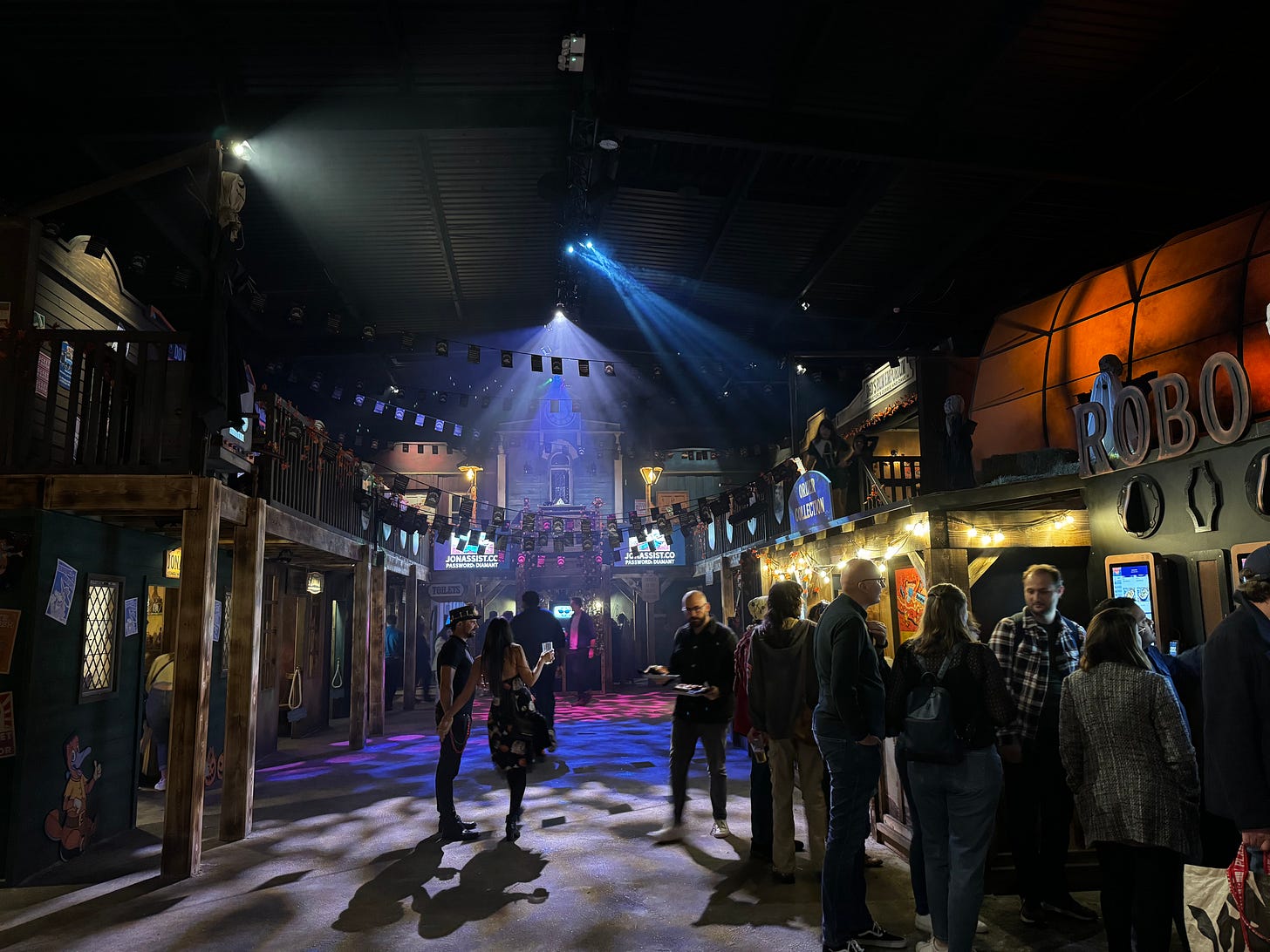


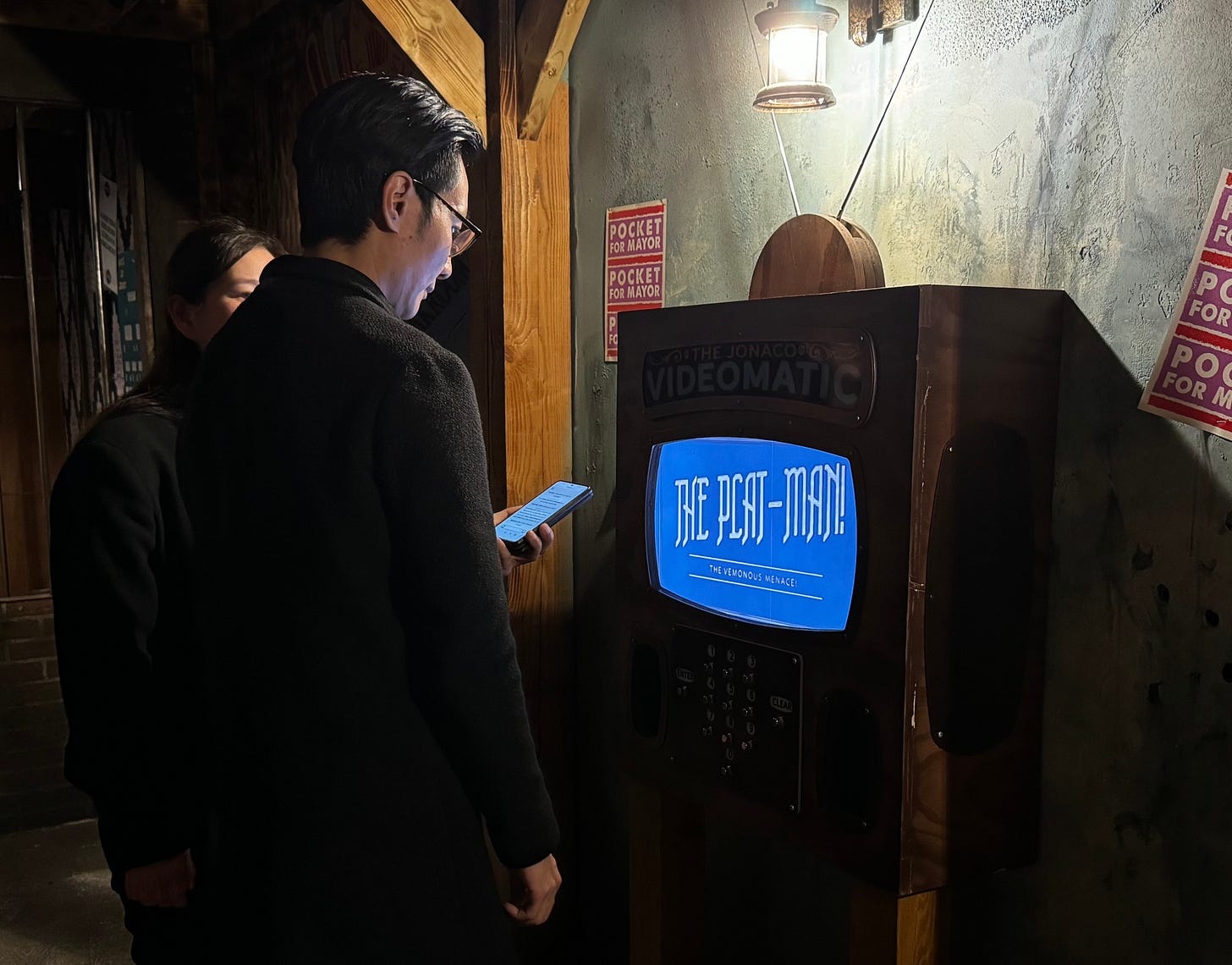
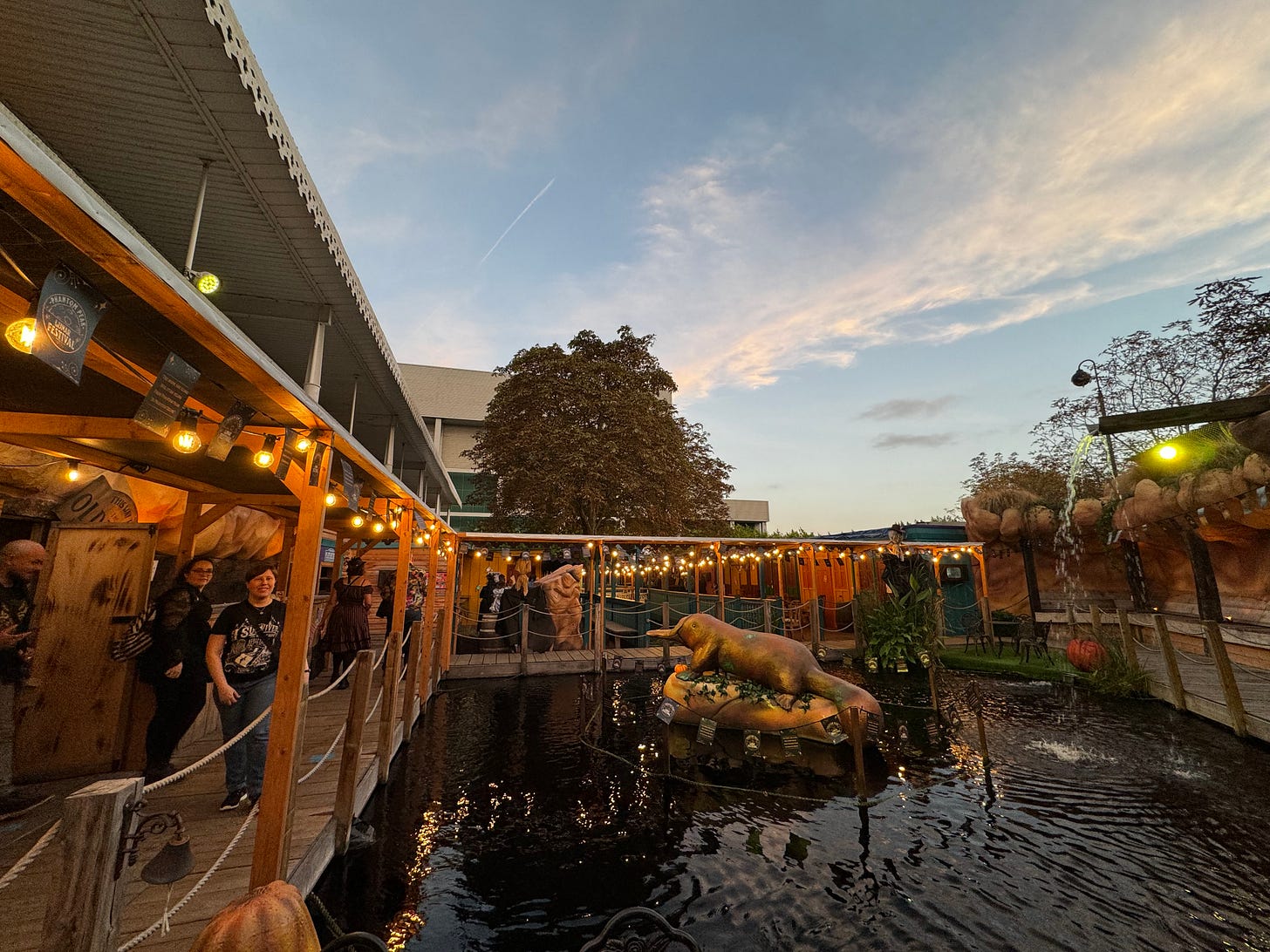
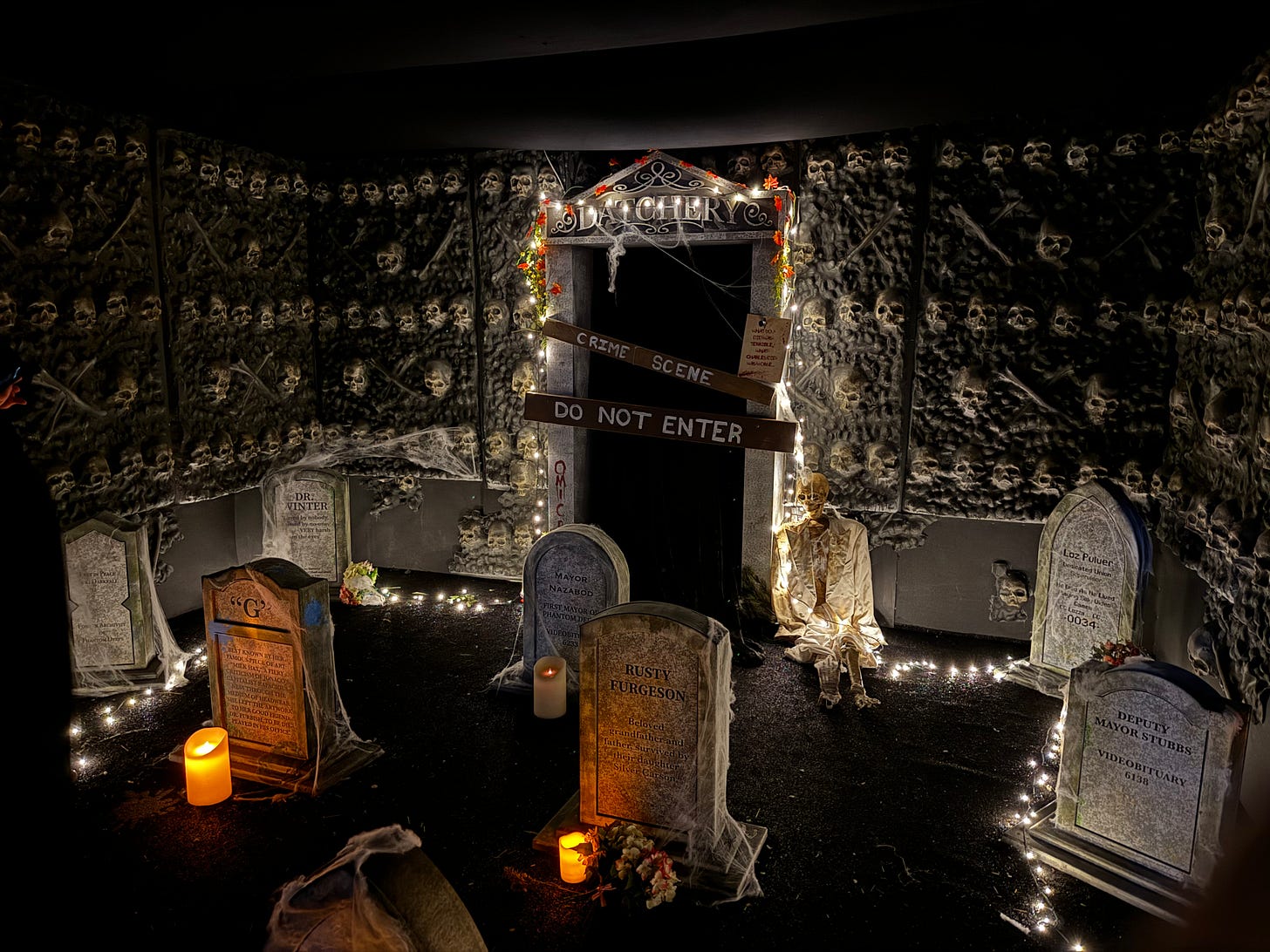
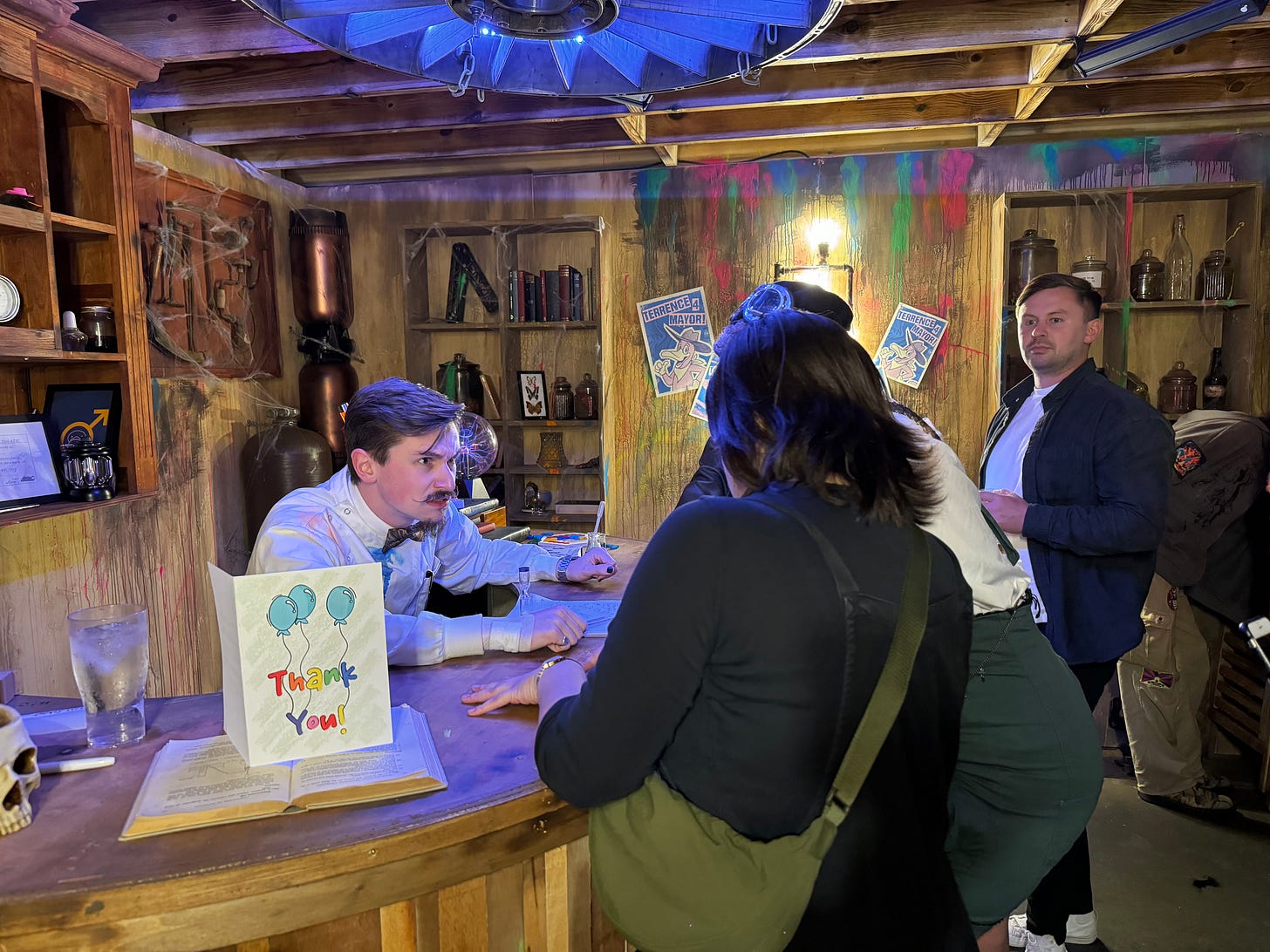

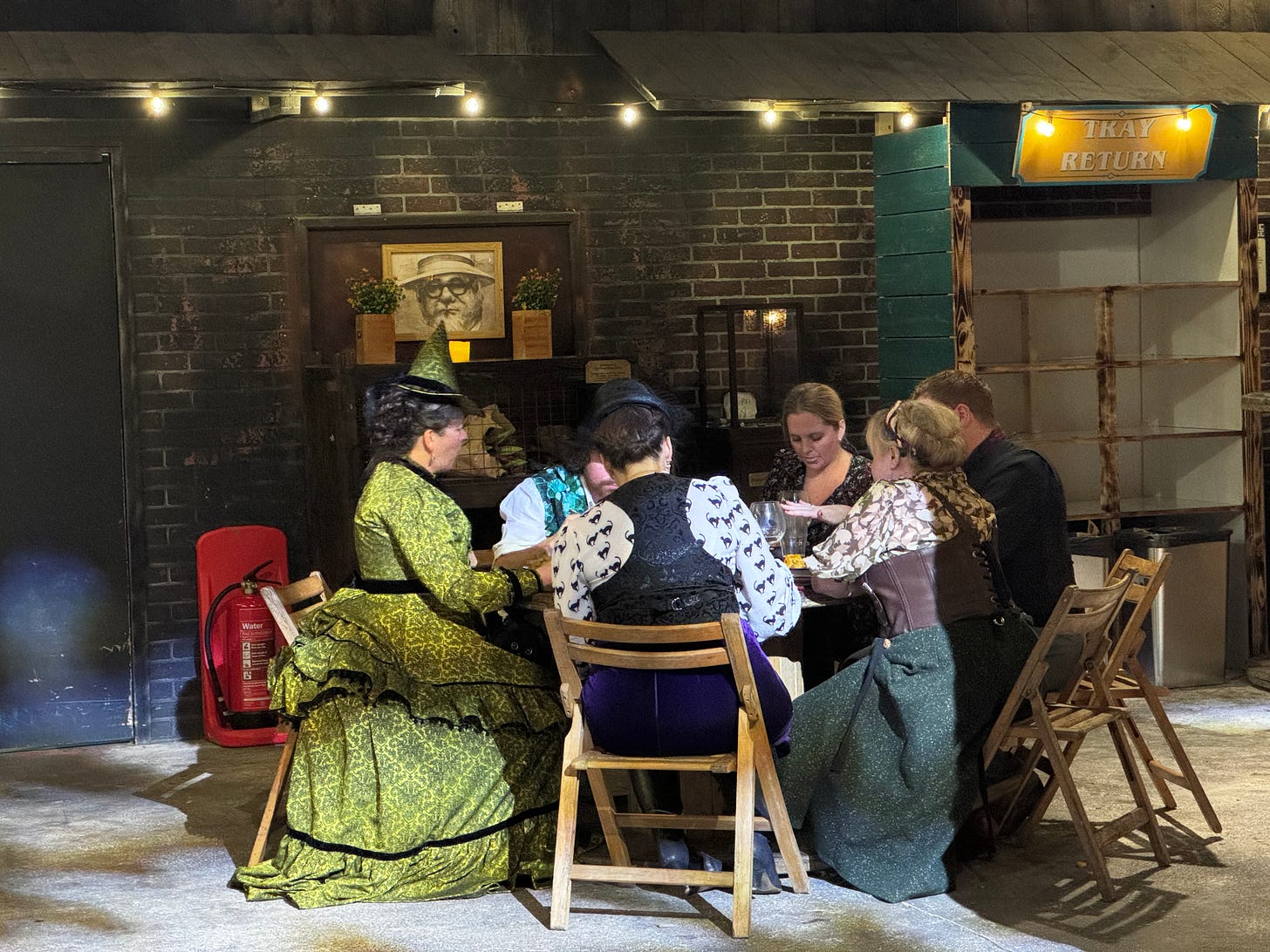
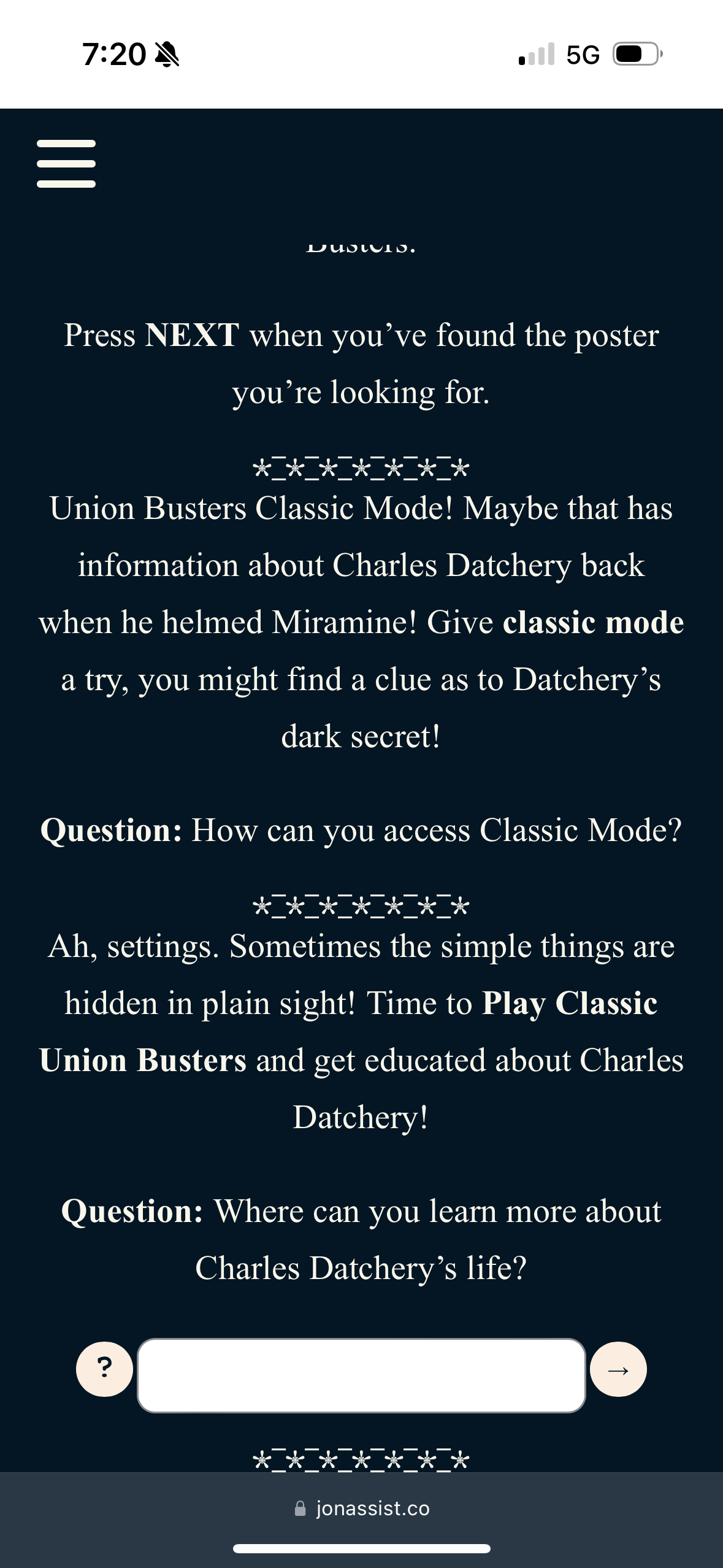
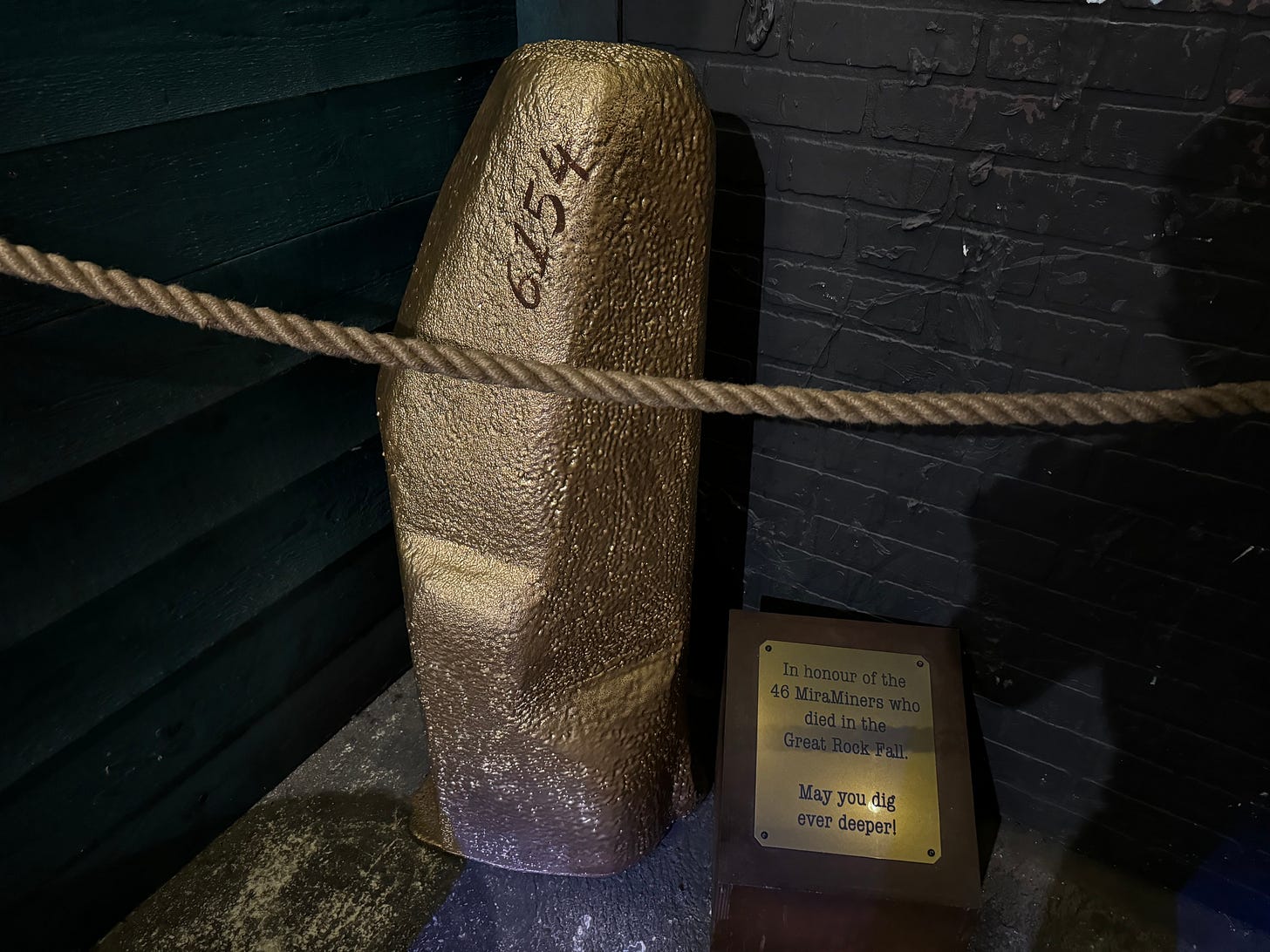
I visited around this time last year, and had a similar experience. We managed to finish several trails though, cause it wasn’t super busy and all the actors had plenty of time for us. The quality of storytelling and puzzles really varied per trail. My guess is that some trails were part of the original design and were a bit more thought out, while others were knocked out quickly later down the line. I loved the more escape room style puzzles and immersive theatre moments but there were not enough of them! One point we had to have one person distract a character, so another could sneak behind them to steal an item - there were a few of these things that went beyond simple conversations with characters which made it more fun. I just wish they had more of this! I can understand though that it doesn’t scale especially when the venue is busier.
This was a very timely read. We’ll be in town in a few weeks for AdventureX and were weighing whether it was worth trying to cram an abbreviated Thursday night visit into our itinerary. Think we’ll just go to the pub instead!